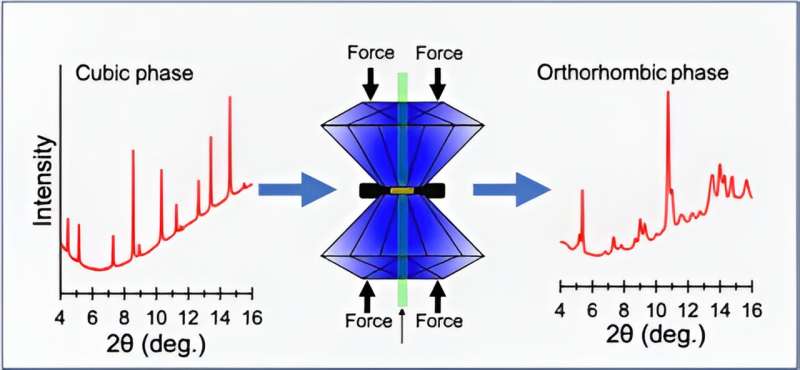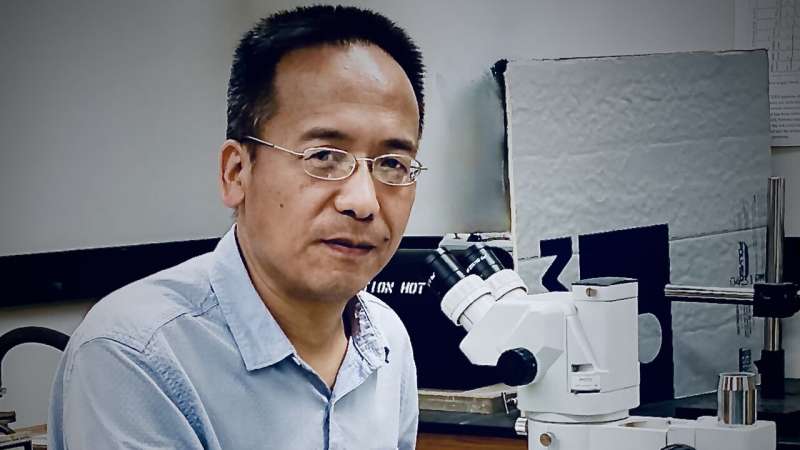How high-pressure techniques can induce changes in crystalline materials

In an article published in Chemistry of Materials Oakland University Associate Professor of Â鶹ÒùÔºics Yuejian Wang explored how high-pressure techniques can induce changes in certain crystalline materials, similar to the way graphite can be converted into diamond when subjected to high pressure and high temperature.
"High pressure serves as a potent tool for unraveling the mysteries concealed within material that remain undiscovered at room temperature and ambient pressure," Wang said. "By significantly altering the distance between atoms, pressure can dynamically modify crystal structures, leading to profound changes in physical properties, as exemplified by the transformation between diamond and graphite.
"In the field of high-pressure materials science, we subject materials to high-pressure conditions and then utilize X-ray techniques, as well as other tools, to observe the resulting changes withing the materials," he added. "Just as X-rays are used in medical applications to visualize internal structures of the human body, they can also be employed to detect and analyze the crystal structures within materials. This allows scientists to gain insights into the intricate transformation."

In the article, titled "," Wang investigated GeV4S8, a member of the Spinel family, by using high-pressure techniques, along with multiple characterization tools. Spinels are commonly found in metamorphic or igneous rocks, and are renowned for their diverse array of colors, which encompass red, blue, green, purple, orange, yellow, and black variants.
"Among spinels, GeV4S8 has attracted considerable attention owing to its unique electrical and magnetic properties," Wang said.
The results of the study, Wang said, provide significant insights into both chemistry and physics domains.
"It presents a comprehensive and detailed understanding of the compression-induced transition from cubic to orthorhombic structure, shedding light on the intricate mechanisms involved. Moreover, the study delves into the materials physics aspect, elucidating the transition from semiconductor to conductor and exploring the role of the Jahn-Teller effect in governing these transitions."
According to Wang, the results of the study not only enrich humanity's understanding of this system but also holds the potential to spark broad interest and inspire further investigations.
"For instance, delving into how this material behaves under simultaneous compression and cooling could serve as an extraordinary and worthwhile topic for future exploration," he said. "Such inquiries could lead to new insights and applications in the realm of material science and condensed matter physics."
More information: Yuejian Wang et al, Pressure-Induced Changes in the Crystal Structure and Electrical Conductivity of GeV4S8, Chemistry of Materials (2024).
Journal information: Chemistry of Materials
Provided by Oakland University




















